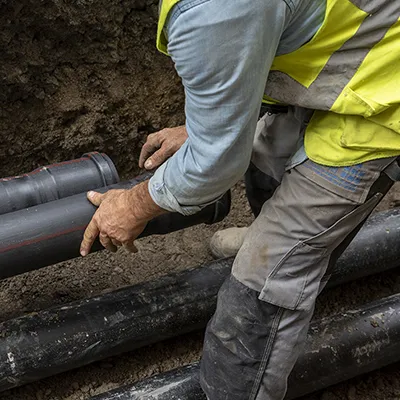Water Utilities
Utilities Embracing Innovations and Best-Practices
When water utilities lead the charge to replace lead pipes, communities see real progress. Utilities play a crucial role in replacing lead pipes and safeguarding public health.

7 Key Principles for Water Utilities to Act on Lead Pipe Replacement
Seven key principles can determine the success of any lead service line replacement program. Each offers actions, tools, and resources to support utilities at any stage. Flexibility, continuous improvement, and community engagement help accelerate replacements and ensure safe, reliable, and affordable drinking water for all.
Get started by exploring each of these principles:
Highlighting Water Utility Action
Water utilities across the country are taking action to successfully remove lead pipes and ensure their community has access to safer drinking water.

Will Pickering
CEO, Pittsburgh Water
“By addressing this legacy issue that our customers inherited, we have shown that utilities can and should work to improve the quality of life for its customers. In our eighth year of lead service line replacement in Pittsburgh, we are grateful for the trust this work has helped to build in the community.”

Racquel Vaske
General Manager, Saint Paul Regional Water Services
“The first thing to learn about LSLR Projects is that they differ greatly from most other projects due to the need to enter private homes. A project to replace 100 LSLRs should be considered 100 mini projects, each with their own nuances and challenges.”

Andrea Yang
Interim Executive Director, Greater Cincinnati Water Works
“By implementing a robust community outreach program, we’ve worked to provide information and answer questions about how customers can protect themselves from the risk of lead water service lines in a way that’s easily understandable and can alleviate their fears. We’ve successfully increased participation in our lead pipe removal program from 40% to 90%. Building trust of residents has been essential as some residents are leery of letting us do work on their property.”
Share your success, and help inspire others!
Did you know?
Replacing lead pipes helps avoid costly public health crises
Proactively replacing lead service lines prevents expensive crisis responses, like bottled water distribution, emergency communications, lawsuits, and lost public trust.
There’s a federal 10-year mandate to replace lead pipes
The US EPA’s Lead and Copper Rule requires all lead pipes to be replaced within a decade. Has your community started?
9.2 million lead pipes are still in use
Millions of homes still get water through toxic lead pipes. Replacing them is essential to ensure safe drinking water and protect public health.
Replacing lead pipes saves billions in water loss
Aging lead pipes leak. Replacing these leaky pipes saves billions by preventing water losses and reducing maintenance, as demonstrated by an Ohio Environmental Council analysis that found the state could save up to $82 billion by replacing all lead pipes in 15 years.
Check out our Lead Pipes 101
Learn more about lead in drinking water, including its negative impacts and practical solutions to get the lead out






